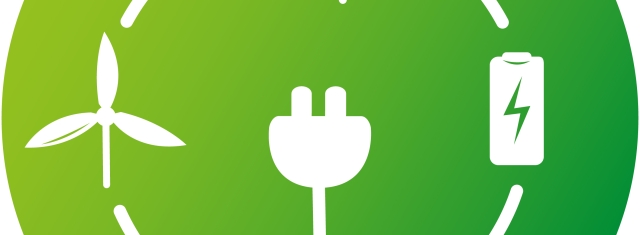Business
Exploring the Different Forms of Renewable Energy Storage
Renewable Energy Storage

(Source: Wikimedia Commons)
USPA NEWS -
As renewable energy sources become increasingly integrated into the grid, the need for effective storage solutions rises. From pumped hydroelectric storage to hydrogen as an energy carrier, there are several options available for renewable energy storage, each with its own unique advantages and limitations.
Renewable energy storage is a critical element in the transition to a low-carbon, sustainable energy system. As more renewable energy sources such as solar and wind are integrated into the grid, the need for effective storage solutions increases. There are several different forms of renewable energy storage, each with its own unique characteristics and capabilities.
Pumped hydroelectric storage is a mature technology that involves pumping water uphill to a reservoir when excess electricity is available, and then releasing it downhill through a turbine to generate electricity when demand is high. Pumped hydroelectric storage can provide large amounts of power for extended periods of time, but it requires a significant amount of water and a suitable topography, which limits its potential locations.
Pumped hydroelectric storage is a mature technology that involves pumping water uphill to a reservoir when excess electricity is available, and then releasing it downhill through a turbine to generate electricity when demand is high. Pumped hydroelectric storage can provide large amounts of power for extended periods of time, but it requires a significant amount of water and a suitable topography, which limits its potential locations.
Batteries are another form of renewable energy storage, allowing electricity to be stored in chemical form and then released as needed. There are several different types of batteries that can be used for renewable energy storage, including lead-acid batteries, lithium-ion batteries, and flow batteries. Lead-acid batteries are inexpensive and have a long lifespan, but they are heavy and have a lower energy density compared to other types of batteries. Lithium-ion batteries are widely used in consumer electronics and are becoming increasingly popular for renewable energy storage due to their high energy density and long lifespan. Flow batteries are a newer technology that uses liquid electrolytes to store energy, and they have the advantage of being able to store large amounts of energy for extended periods of time. However, they can be expensive and require careful maintenance.
Thermal storage involves using excess renewable energy to heat a substance, such as water or molten salt, which can then be used to generate electricity when demand is high. Thermal storage can be an effective way to store large amounts of energy over long periods of time, but it can be costly to implement and requires careful management to ensure the safety and stability of the storage system.
Hydrogen can also be used as an energy carrier, with renewable energy being used to produce hydrogen through the process of electrolysis. The hydrogen can then be used in a fuel cell to generate electricity, or it can be stored for later use. Hydrogen has the advantage of being able to store a large amount of energy in a relatively small volume, but it can be difficult and expensive to produce and store, and there are safety concerns associated with its handling and transport.
Hydrogen can also be used as an energy carrier, with renewable energy being used to produce hydrogen through the process of electrolysis. The hydrogen can then be used in a fuel cell to generate electricity, or it can be stored for later use. Hydrogen has the advantage of being able to store a large amount of energy in a relatively small volume, but it can be difficult and expensive to produce and store, and there are safety concerns associated with its handling and transport.
In conclusion, renewable energy storage is an essential component of the transition to a low-carbon, sustainable energy system. There are several different forms of renewable energy storage, each with its own unique characteristics and capabilities. As we continue to develop and deploy new technologies, it is important that we carefully consider the pros and cons of each option in order to make the most effective and cost-effective choices.
Renewable Energy Storage Sustainable Energy System Pumped Hydroelectric Storage Batteries Thermal Storage Hydrogen Electrolysis Energy Density Long Lifespan Cost-effective
Liability for this article lies with the author, who also holds the copyright. Editorial content from USPA may be quoted on other websites as long as the quote comprises no more than 5% of the entire text, is marked as such and the source is named (via hyperlink).





